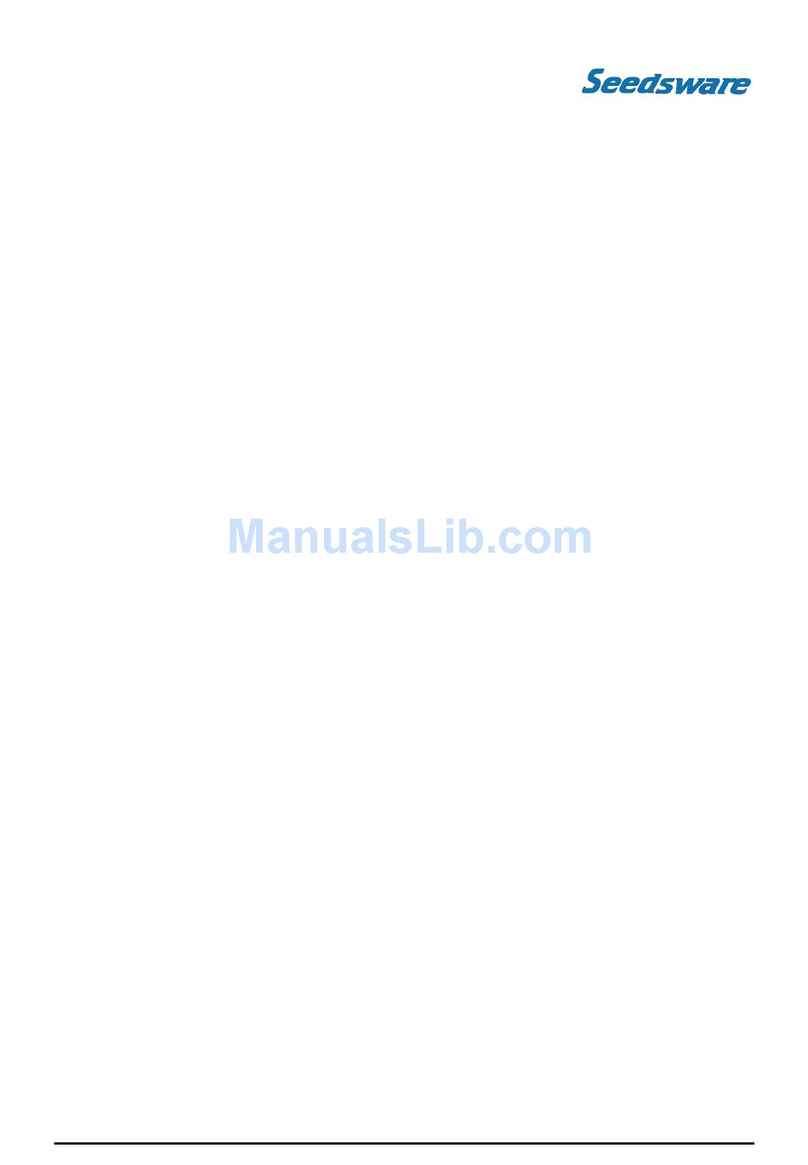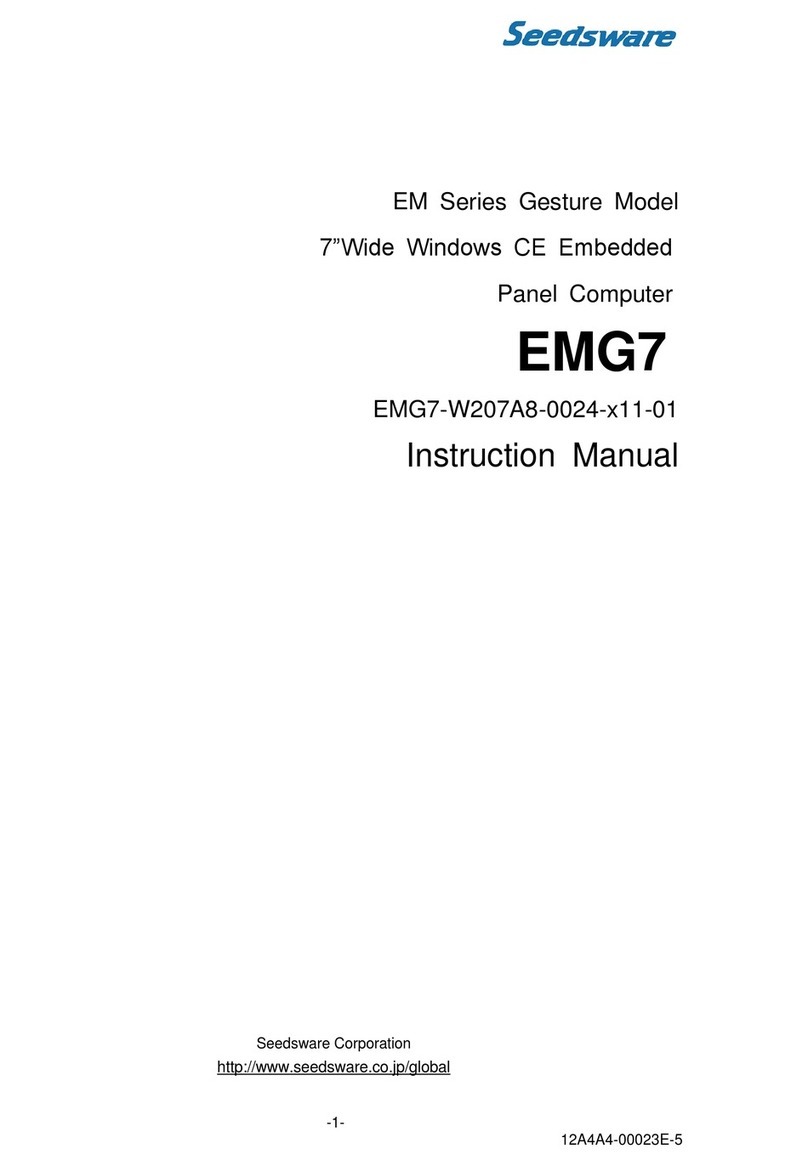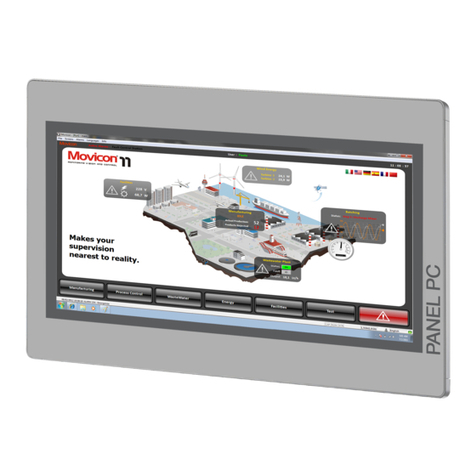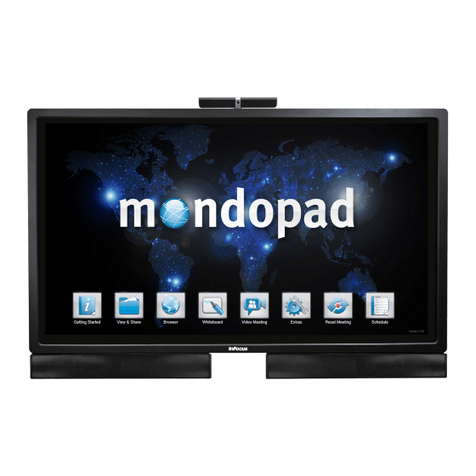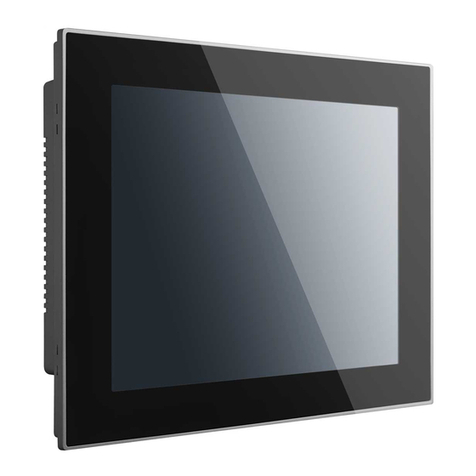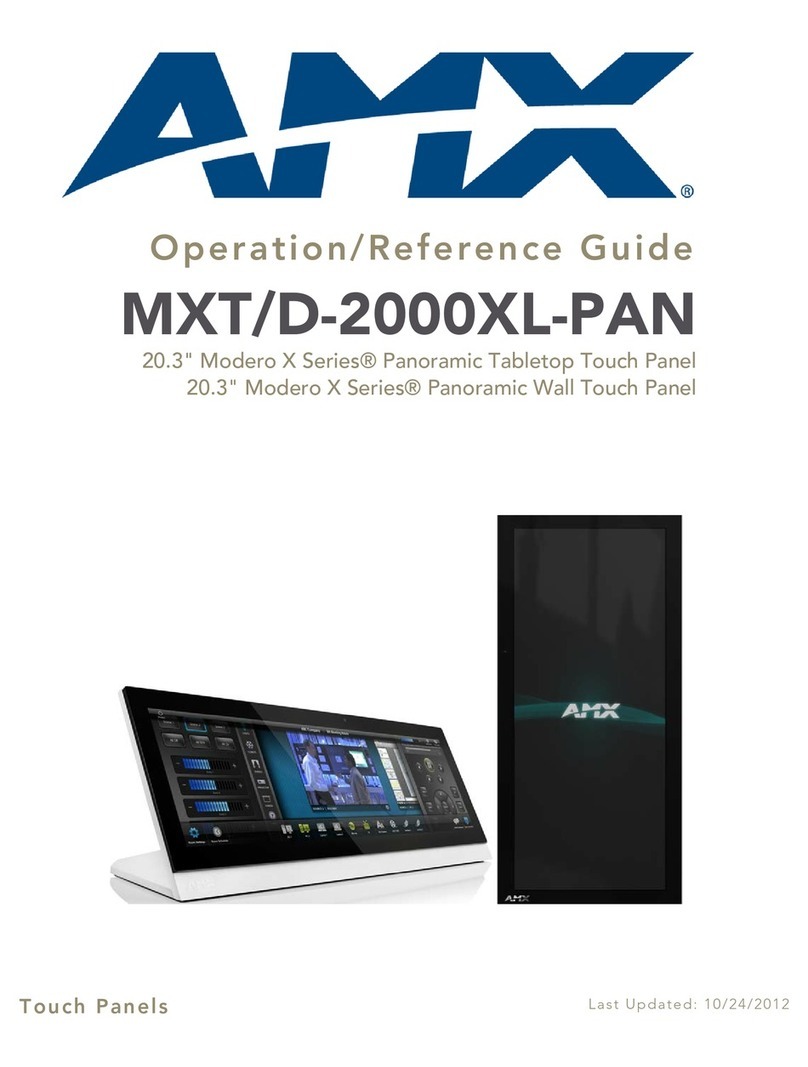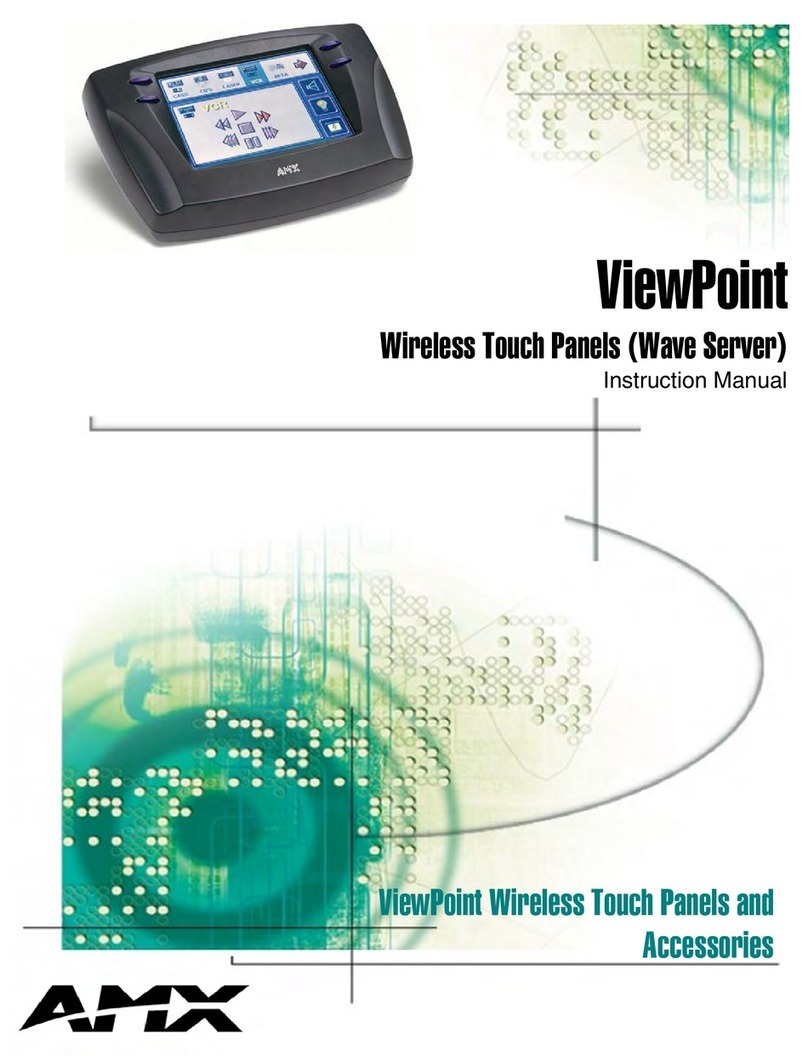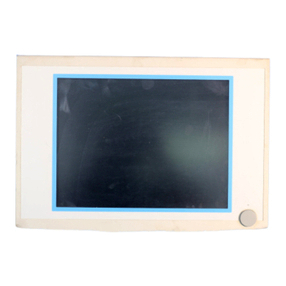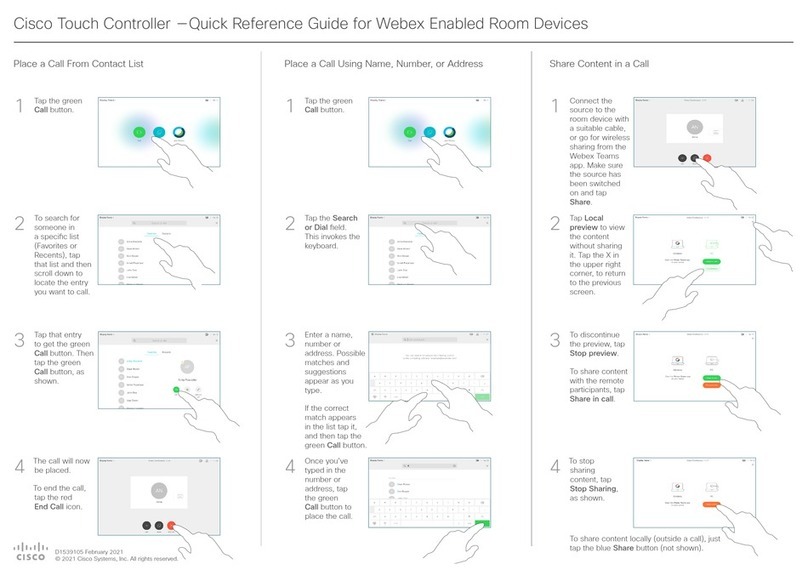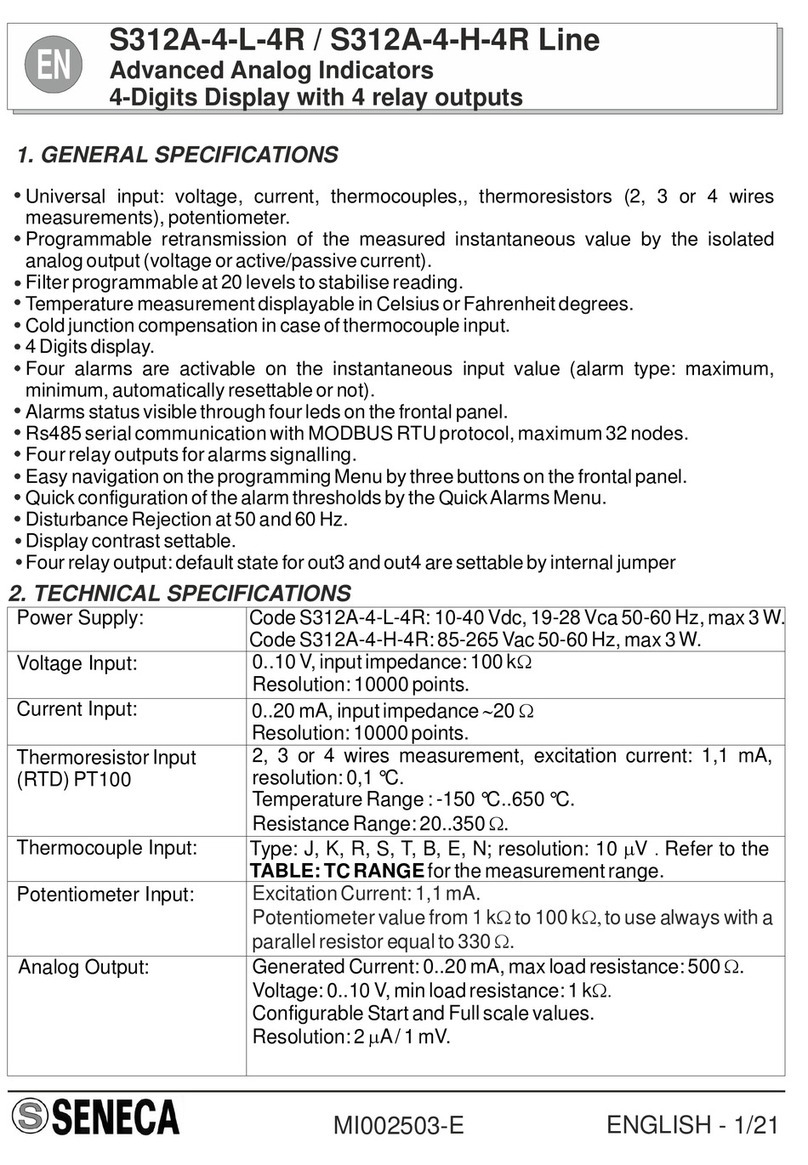Seedsware EM Series User manual

- 1 - 17A4A4-00003E-2
EM Series
Embedded Linux
Open Frame Panel Computer
EM8/EMG8
Model:
EM8-W104A7-0005-207
/
EMG8-W104A7-0005-207
EM8-205A7-0005-207
/
EMG8-205A7-0005-207
Instruction Manual
Seedsware Corporation
http://www.seedsware.co.jp/global/

- 2 - 17A4A4-00003E-2
Table of Contents
Table of Contents.......................................................................................................................................... 2
1. Introduction............................................................................................................................................ 4
2. Notes..................................................................................................................................................... 4
3. Precautions for Safe Use ...................................................................................................................... 4
3-1 Warnings...........................................................................................................................................................5
3-2 Cautions............................................................................................................................................................6
3-3 Handling of LCD Panels....................................................................................................................................8
3-4 Handling of Resistive Touch Screen..................................................................................................................8
3-5 Handling of Projected Capacitive Touch Screen ...............................................................................................8
3-6 Handling of microSD card .................................................................................................................................9
4. Packaged Contents............................................................................................................................. 10
5. Names of Parts.................................................................................................................................... 11
6. External Interface................................................................................................................................ 13
6-1 microSD card slot........................................................................................................................................13
6-2 Serial Interface(SIO1/SIO2)....................................................................................................................13
6-3 Ethernet......................................................................................................................................................14
6-4 USB Host Interface.....................................................................................................................................14
6-5 USB Device Interface..................................................................................................................................14
6-6 Power Connector........................................................................................................................................15
6-7 Battery Interface..........................................................................................................................................15
6-8 DIO Interface 1............................................................................................................................................16
6-9 DIO Interface 2............................................................................................................................................18
7. Installation and Wiring......................................................................................................................... 19
7-1 Installing condition...........................................................................................................................................19
7-2 Mounting.........................................................................................................................................................20
7-2-1 Panel mounting........................................................................................................................................20
7-2-2 Panel mounting........................................................................................................................................21
7-2-3 Touch Screen(LCD) hight adjustment......................................................................................................22
8. Wiring Procedure................................................................................................................................. 24
Wiring Location....................................................................................................................................................24
1) Connecting Unit to Power .............................................................................................................................25
2) Connecting to LAN cable ..............................................................................................................................25
3) Connecting to the battery..............................................................................................................................25
4) Connecting to USB Mini-B cable...................................................................................................................25
5) Connecting to USB device............................................................................................................................25
6) Connecting to communication cable..............................................................................................................25
7) Connecting to DIO interface FFC..................................................................................................................26
9. Inserting and Removing the microSD card.......................................................................................... 27
9-1 Inserting the microSD card..............................................................................................................................27

- 3 - 17A4A4-00003E-2
9-2 Removing the microSD card ...........................................................................................................................28
10. Calibration........................................................................................................................................... 29
10-1 Sensor Sensitivity Calibration........................................................................................................................29
10-2 Coordinate Calibration...................................................................................................................................29
11. Starting Method................................................................................................................................... 30
12. Maintenance........................................................................................................................................ 30
12-1 Display..........................................................................................................................................................30
12-2 Regular Maintenance....................................................................................................................................30
13. Compatible Standards......................................................................................................................... 30
13-1 RoHS Directive .............................................................................................................................................30
14. List of Option....................................................................................................................................... 31
15. Warranty and Repair........................................................................................................................... 32
15-1 Inquires.........................................................................................................................................................32
15-2 Warranty.......................................................................................................................................................32
15-3 Production Discontinuance............................................................................................................................32
15-4 Repair Condition ...........................................................................................................................................32
16. Others ................................................................................................................................................. 33

- 4 - 17A4A4-00003E-2
1. Introduction
Thank you for choosing Seedsware products. Please read this manual carefully and use our product
correctly.
.
2. Notes
■Reproduction and/or duplication of this product and/or this manual, in any form, in whole or in
part, without permission is strictly prohibited.
■Contents of this product and/or this manual are subject to change without previous notice.
■Although all efforts have been made to ensure the accuracy of this product and/or the contents of
this manual, should you notice any errors or have any questions, feel free to contact and notify
us.
■Seedsware shall not be held liable in any way for damages or losses, nor be held responsible for
any claims by a third party as a result of using this product.
3. Precautions for Safe Use
Precautions are noted in this manual in order for the product to be used safely. Read this manual
along with other related manuals carefully to understand the correct handling and functions of the unit..
Safety Symbol Legends
Safety symbols listed below are noted throughout this manual for the TM to be used correctly. These
symbols stand for very important safety information as noted below:
Warning
Indicates a procedure, condition, or statement that, if not strictly observed, could result in
severe human injuries or loss of life.
Caution
Indicates a procedure, condition, or statement that, if not strictly observed, could result in
human injuries or property damage.
Indicates a procedure, condition, or statement that is strictly prohibited for correct use of the
equipment. (Forbidden)
Indicates a procedure, condition, or statement that must be strictly followed for correct use of
the equipment. (Mandatory)

- 5 - 17A4A4-00003E-2
3-1 Warnings WARNING
Warnings for Design
Designing switches that might cause human injuries and/or property damage on the touch screen is strictly
prohibited. Unintentional output signals due to malfunction of the main body, units, and/or cables, etc. can
cause serious injuries. Design the system so that switches with major functions are equipped on other
devices.
Designing safety related switches on the EM8 is prohibited. Switches related to safety, such as emergency
stop switches, should be made on a different hardware.
Design the system so the device will not malfunction due to communication abnormalities between the EM8
and the host controller. Failure to follow may result in injury to the human body or damage to properties.
Do not use EM8 as a major warning system that may cause injuries/ serious material damages, and or
production stoppage. Control devices related to critical warning displays and warnings should be structured on
an independent, redundant hardware system or a mechanical interlock.
EM8 is not intended for use for aircraft equipment, aerospace instruments, trunk line communication
equipment, nuclear power control equipment, and medical equipment that concerns life support, and or other
equipment that concerns high reliability and safety. It cannot be used for these purposes.
When using the EM8 for purposes that concern high reliability and safety functions and accuracy such as
transport equipment (trains, automobiles, ship, etc.), crime/disaster prevention devices, various safety
devices, and medical equipment that does not concern life support, be sure to have safety features including
redundancy and false operation prevention measures incorporated into the entire system.
Display will black out when the backlight goes out. If mistakenly operated in this condition, it might result in
improper operation. Do not design touch-switches that might cause human injuries and material damages on
the EM8.
Phenomenon as below will occur when the backlights go out:
(1) Screen will go out even if the Backlight OFF function is not set.
(2) Display does not recover at touch after the backlight goes off as well as the display.
Warnings for Handling
Do not modify/disassemble the EM8. It may cause fires and/or electric shocks
Do not use around flammable gas. It may cause explosions.
Do not put any kind of liquid, such as water, and metals into the product. It may cause fire and/or electrical
shocks.

- 6 - 17A4A4-00003E-2
Warnings for Wiring
For wiring and installation, please refer to the manual and specifications in order to conduct it correctly. It may
cause fires and/or electric shocks.
Before installing the power cable, make sure power is not being supplied from power source. It may cause
electrical shock.
Do not use power voltage other than what is specified. It may cause fires and/or electric shocks.
3-2 Cautions Cautions
Cautions for installation
Make sure cables are securely connected to connectors to avoid wrong input and output due to loose
connection.
Cautions for Applying Current and Maintenance
During access to microSD card, do not turn off the EM8 or pull out the microSD card. It might damage the
data inside of the microSD card.
Cautions for Wiring
Use D type grounding dedicated to EM8 for FG terminals. It may cause electric shocks or malfunctions.
Make sure chips and objects from wiring do not enter the EM8. It may cause fire or malfunctions.
Cautions for Disposal
When disposing the product, please treat is as industrial waste.

- 7 - 17A4A4-00003E-2
Precautions for Safe Use
Do not press down hard on the display area of EM8 with hard objects. It may break the LCD panel and may
cause injuries. Also, do not press down on the panel with sharp objects such as mechanical pencils or
drivers. It may damage the displays.
Installing EM8 in areas out of the range of the specification will cause failures.
Do not use in areas where temperature rises and dwells rapidly. It may cause failures.
Avoid areas where rapid temperature change could cause condensation. It may cause failures.
Do not put any kind of liquid, such as water, or any metal parts into EM8. It may cause failures or electric
shocks.
Do not use or keep EM8 in locations with exposure to direct sunlight, high temperature, fine particles,
humidity, and/or vibrations.
Do not use or keep in areas where gasified chemicals are exuded into the air, or where chemical
contamination can occur.
Acid, Alkali, other saline chemicals: Failures due to corrosion
Organic solvents: Fire
If the surface of EM8 gets dirty, wipe with a dry, soft cloth damped with a neutral detergent then wrung dry.
Do not use thinner or organic solvents.
LCD of display will deteriorate with ultraviolet rays. Do not use or keep in areas under strong ultraviolet rays.
When stored in sub-ambient temperature, LCD of display might coagulate and cause damage to the panel.
Also, when stored in over-ambient temperature, the LCD will turn into isotropic liquid and will not turn back to
its original state. Please store in specified ambient temperature.
After turning off the power of EM8, leave for a while before turning the power back on. It might not function
normally.
Be sure to take back-up assuming the loss of data in the EM8 in an event of an unexpected accident.

- 8 - 17A4A4-00003E-2
3-3 Handling of LCD Panels
(1) The LCD display contains skin-irritating materials. If liquid materials flow out due to damage and comes
in contact with skin, wash the area under running water for at least 15 minutes. If it gets into the eyes,
wash under running water and consult a doctor.
(2) The LCD display might have uneven brightness according to the contents being displayed. This is not a
malfunction.
(3) Minute spots (dark or bright) may occur in the LCD display elements. This is a basic characteristic of the
LCD display and not a malfunction.
(4) When LCD display is viewed outside the specified view angel, the color might seem different. This is a
basic characteristic of the LCD display and not a malfunction.
(5) When displaying a same image for a long period of time, it might cause an image lag. This is a basic
characteristic of the LCD display and not a malfunction.
In order to avoid image lags, please follow the below procedures:
1. When leaving the same image displayed, use the” display off” function.
2.Change the image displayed periodically and do not display the same image for a long period of time.
3-4 Handling of Resistive Touch Screen
(1) Please be warned that applications that require for one point to be pressed for a prolonged time may
cause failures due to the touch screen's structural characteristics.
(2) The touch screen is made of glass. Glass becomes easy to break if it gets scratched. Please handle as
not to hit glass or hard objects
(3) Due to the characteristics of the touch screen, pressing a little outside the display area may detect it as
the coordinates of the edge of the touch panel. Please consider the application carefully and design the
application.
(4) Touch screen coordinates may shift due to aging or depending on its operating environment. Conduct
calibration of the touchscreen to correctly set the coordinates.
3-5 Handling of Projected Capacitive Touch Screen
1) If elements that change ambient environments or electric fields (capacitors with large capacity, power units,
and materials with high permittivity such as metals) are set close to the product, it might have impact to the
coordinate detection. Make sure to keep a good distance from the above unstable elements as much as
possible when designing.
2) Due to the characteristics of the touch screen, its functions might become unstable according to the
environment it is installed. For correct operations, perform sensitivity sensor calibration when building into a
device.
Also if at any time the touch screen operation become unstable due to changes in environment or
installation conditions, perform sensitivity sensor calibration.
3) The touch screen surface is made of glass. Glass is subject to break once scratched. Please handle with
care and avoid glass from contacting other glass and hard objects.
4) Touch screen may not operate correctly when there is moisture on the surface.
When moisture is detected on the touch screen surface, please wipe it dry before use.
5) When designing applications, consider the fact that area slightly outside the display might be read as a
coordinate due to the characteristics of the touch screen when touched.

- 9 - 17A4A4-00003E-2
3-6 Handling of microSD card
1) Use a computer for important data and take backup to an outside media (hard disc, CD-R, etc.) regularly.
We will not be held liable for any data lost or changed that is registered in the microSD card.
2) Do not remove the microSD card or turn the unit power off during write or read. It may cause the data inside
the unit or the microSD card to be lost or damaged (deleted).
3) Please keep the socket terminal of the memory cards and microSD card clear of foreign objects.
4) Do not touch the terminals with fingers or metal objects. It may cause malfunctions.
5) When inserting the microSD card, make sure it is inserted in the correct direction.
6) Do not apply undue force when inserting/removing.
7) Do not insert anything other than a microSD card into the microSD card socket. Also be careful of any
foreign objects entering the socket.
8) Do not bend, break, or place under heavy objects.
9) Do not place in areas with sudden temperature change. Condensing will cause malfunctions.
10) Do not place in areas near corrosive chemicals or where corrosive gases evolve. It may cause malfunctions.
11) When cleaning, wipe with a dry soft cloth.
12) When carrying and storing, place the microSD card memory card in its protection case

- 10 - 17A4A4-00003E-2
4. Packaged Contents
Below are included in the package. Please check before use..
■4.3”/5.7”
*Maximum number of units that could be stored: 10 units
<Note>
Although efforts have been made to ensure quality and packaging at shipment, should you notice any damage or a
shortage of parts, please contact a dealer or Seedsware for additional instructions before use.
Main Unit 10 units/box*

- 11 - 17A4A4-00003E-2
5. Names of Parts
■4.3”
Front
①USB Host
②USB Device
③Power input
④Ethernet
⑤Serial Port (SIO1)
⑥Serial Port (SIO2)
⑦Battery input
⑧DIO 1
⑨DIO2
⑩SIO2 setting switch
⑪Serial number label
Bottom
⑫Product label
Top
⑬microSD Card slot
⑦
⑪
①
②
⑫
③
④
⑥
⑤
⑩
⑧
⑨
⑬

- 12 - 17A4A4-00003E-2
■5.7”
Front
①USB Host
②USB Device
③Power input
④Ethernet
⑤Serial port(SIO1)
⑥Serial port(SIO2)
⑦Battery input
⑧DIO 1
⑨DIO 2
⑩SIO2 setting switch
⑪Serial number label
Bottom
⑫Product label
Top
⑬microSD card slot
⑦
⑪
①
②
⑫
③
④
⑥
⑤
⑩
⑧
⑨
⑬

- 13 - 17A4A4-00003E-2
6. External Interface
6-1 microSD card slot
■4.3” / 5.7”
Connector:microSD card slot (Push-in/Push-out method)
Corresponding media:microSD/SDHC memory card
Maximum capacity:32GB
6-2 Serial Interface(SIO1/SIO2)
■4.3” / 5.7”
Serial port(SIO1):RS232C
Connector :Nylon connector
Recommended connector:B5B-PH-K-S (JST)
PIN No
Signal
Schematic
1
RXD
2
TXD
3
GND
4
RTS
5
CTS
Serial port(SIO2):RS422/485 ※1
Connector :Nylon connector
Recommended connector :B6B-PH-K-S (JST)
PIN No
Signal
Schematic
RS422
RS485
1
TX+
DATA+
2
TX-
DATA-
3
GND
GND
4
RX+
(DATA+)
5
RX-
(DATA-)
6
GND
GND
※1 RS422/485 setting enable to change by SIO2 setting switch
Default setting at shipment is RS485 Terminating resistance enabled
PIN No
RS422
RS485
Detail
1
ON/OFF
ON: Terminating enable / OFF: disable
2
OFF
ON
RS422/485 setting
3
OFF
ON
4
OFF
ON
1
5
1
6

- 14 - 17A4A4-00003E-2
6-3 Ethernet
■4.3” / 5.7”
Ethernet:10BASE-T/100BASE-TX
Connector :RJ-45
PIN no
Signal
Schematic
1
TX+
2
TX-
3
RX+
4
NC※1
5
NC※1
6
RX-
7
NC※1
8
NC※1
※1NC is not connected
Status LED
GREEN : LINK/ACT
YELLOW : SPEED
※Status LED is located on board
Compatible cable : Above Category 5
6-4 USB Host Interface
■4.3” / 5.7”
Interface :USB2.0
Connector:Type-A connector
Maximum supply current :0.5A
PIN No
Signal
(All ports common)
Schematic
1
USB_VCC
2
D-
3
D+
4
GND
6-5 USB Device Interface
■4.3” / 5.7”
Inter face:USB2.0
Connector :Type-B Mini connector
PIN No
Signal
Schematic
1
USB_VCC
2
D-
3
D+
4
NC※1
5
GND
※1NC is not connected
8
1
1
4
1
5

- 15 - 17A4A4-00003E-2
6-6 Power Connector
■4.3” / 5.7”
Interface:5VDC IN
Connector:Nylon connector
Recommended connector:BM02B-PASS-1-TFT(JST)
PIN
Signal
Schematic
1
+5VDC
2
GND
6-7 Battery Interface
■4.3” / 5.7”
Connector:Nylon connector
Recommended connector:DF13C-2P-1.25V(21) (Hirose electric)
PIN
Signal
Schematic
1
+
2
-
※Please use 3-3.6VDC of nominal voltage type
※Recommended buttery type: CR2032WK11 (Maxell)
2
1
1
2

- 16 - 17A4A4-00003E-2
6-8 DIO Interface 1
■4.3” / 5.7”
Connector:FFC (1mm Pitch)
Type:00-6200-107-032-800 (Kyocera Elco)
PIN
Signal
Input / output
Specification
Interface
Circuit
Schematic
1
DOUT 12
(SCAN 4)
Non-insulated open
drain output
(negative logic)
Voltage : LVCMOS
Current :12mA(MAX)
2
DOUT 11
(SCAN 3)
3
DOUT 10
(SCAN 2)
4
DOUT 9
(SCAN 1)
5
DIN 6
(RET 6)
Non-insulated LVCMOS
Level input
(positive logic)
6
DIN 5
(RET 5)
7
DIN 4
(RET 4)
8
DIN 3
(RET 3)
9
DIN 2
(RET 2)
10
DIN 1
(RET 1)
Applicable cable drawing
10KΩ
DOUT[9-12]
(SCAN[1-4])
3.3V
DIN [1-6]
(RET[1-6])
3.3V
3.3V
10KΩ
100Ω
1
10
Front
Upper

- 17 - 17A4A4-00003E-2
Switch of the matrix circuit as shown in the below diagram can be connected.
※Do not press multiple switches simultaneously. It may result in incorrect input.
SW01
SW07
SW13
SW19
SW02
SW03
SW04
SW05
SW06
SW08
SW14
SW20
SW09
SW15
SW21
SW10
SW16
SW22
SW11
SW17
SW23
SW12
SW18
SW24
RET1
RET2
RET3
RET4
RET5
RET6
SCAN1
SCAN2
SCAN3
SCAN4

- 18 - 17A4A4-00003E-2
6-9 DIO Interface 2
■4.3” / 5.7”
Connector :FFC (1mm pitch)
Type :00-6200-107-032-800 (Kyocera Elco)
PIN
Signal
Input / Output
Specification
Interface circuit
Schematic
1
VCC
5V output
200mA(MAX)※1
Output +5V in the board
2
DOUT 1
Non-insulated open
drain output
(negative logic)
Voltage:LVCMOS
Current :12mA(MAX)
※Limited resistance
included 1KΩ
3
DOUT 2
4
DOUT 3
5
DOUT 4
6
DOUT 5
7
DOUT 6
8
DOUT 7
9
DOUT 8
※1Note:Do not output current value beyond specification
Applicable cable drawing
LED of the LED circuit of below diagram can be connected.
By outputting to the LED number shown below with the InfoSOSA, the LED will can be turned ON or OFF.
1KΩ
10KΩ
DOUT[1-8]
DOUT1
VCC
DOUT2
DOUT3
DOUT4
DOUT5
DOUT6
DOUT7
DOUT8
VCC:5V
Limiting Resistor:1KΩ(Built in the board)
1
9
Front
Upper

- 19 - 17A4A4-00003E-2
7. Installation and Wiring
7-1 Installing condition
・When mounting the EM8 to panels, be sure to have enough room for inserting and removing microSD
cards,cables, and mounting brackets.
・Be sure that the ambient operation temperature (0℃to 55℃) and the ambient humidity
(10%RH to 90%RH. Wet-bulb temperature is 39 ℃or less) )are within their designated ranges.
・“Ambient operation temperature” indicates both the display side and inside of cabinet where the EM8 will
be installed.
Inside cabinet
Display side

- 20 - 17A4A4-00003E-2
7-2 Mounting
7-2-1 Panel mounting
Below is the panel opening dimension example for when applying sheets and etc. to the surface by opening
the entire touch screen surface. Design the chassis accordingly to the actual installing method.
■4.3”
※Diagram from the front side of panel (panel thickness: 1.6mm or less)
■5.7”
※Diagram from the front side of panel (panel thickness: 1.6mm or less)
4-M3×10 Studs (Convex backside)
Burrs prohibited on welded surface
Center of Display
DIO インタフェーステール用開口
4-M3×10 Studs (Convex backside)
Burrs prohibited on welded surface
Center of Display
Other manuals for EM Series
6
This manual suits for next models
6
Table of contents
Other Seedsware Touch Panel manuals
Popular Touch Panel manuals by other brands

Arbor Technology
Arbor Technology P0715 Quick installation guide

Cincoze
Cincoze CS-112HC/P1101 Series user manual

Atlona
Atlona Velocity System AT-VSP-800-BL installation guide
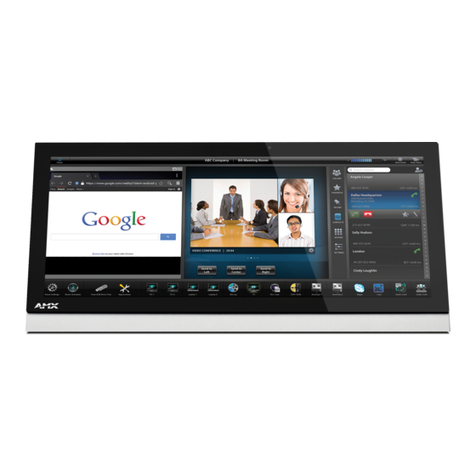
AMX
AMX MT-2002 quick start guide
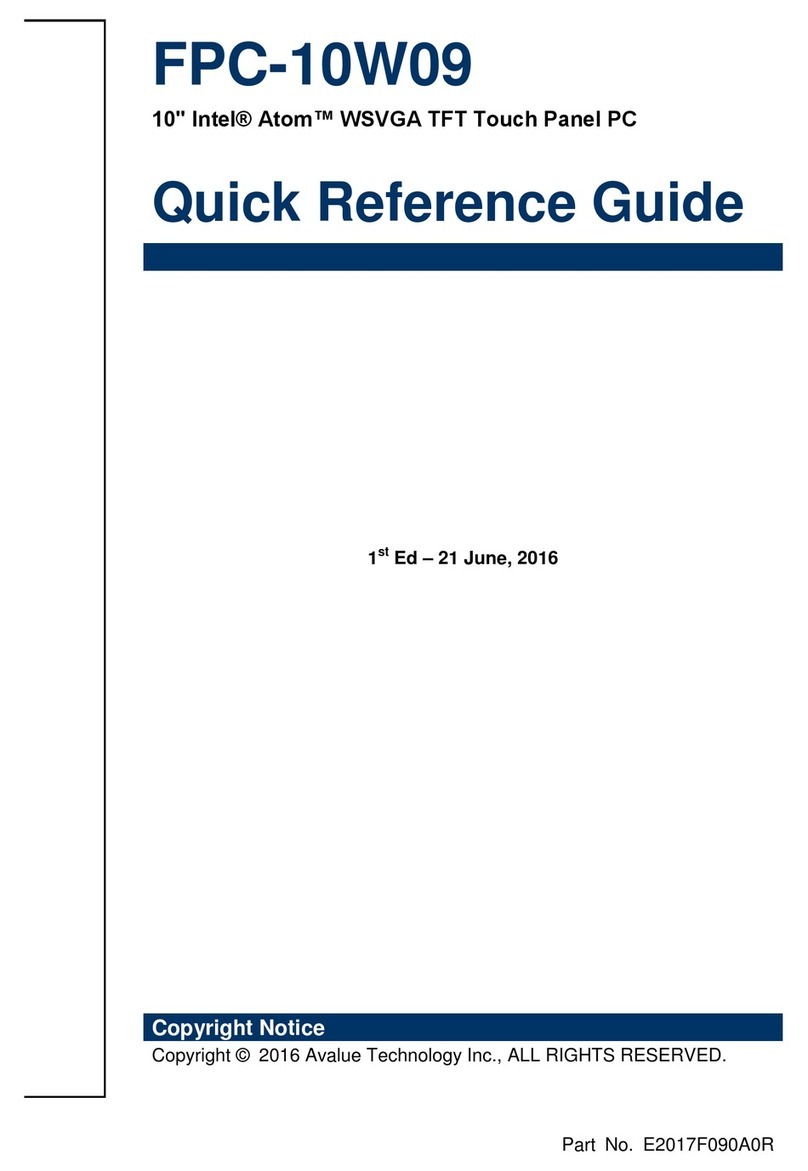
Avalue Technology
Avalue Technology FPC-10W09 Quick reference guide
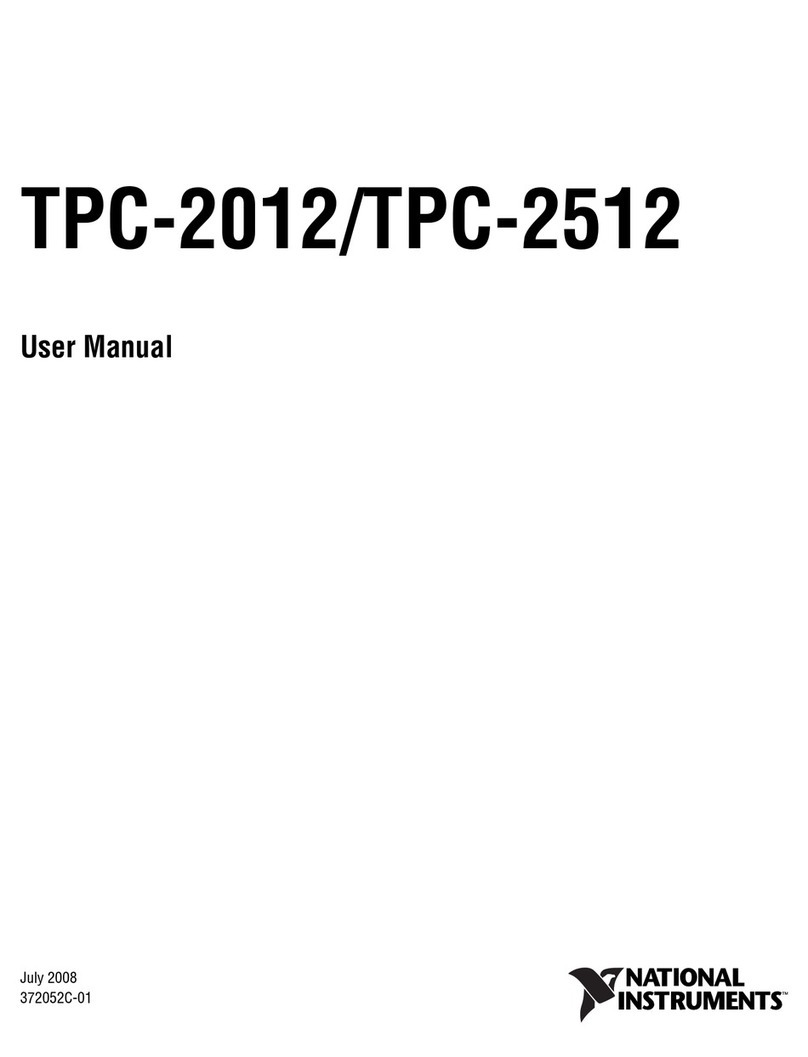
National Instruments
National Instruments Touch Panel Computer TPC-2012 user manual
